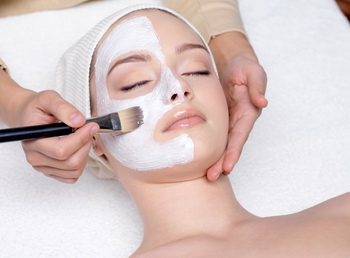Chemical Peels Are Available In Our Office In Richmond Hill, Ontario.
About Chemical Peels
Many people are concerned with fines lines, uneven skin tone , acne scars, sun-damage, melasma and other skin concerns that make them look older or less attractive then they really are. Chemical peels are a safe procedure with no down times that can help address these concerns.
Chemical peels have become very popular and known as lunch time peels as they are non-invasive procedures allowing the patient to return right back to work post treatment.
During your chemical peel treatment, the skin is exfoliated using β-hydroxy or α-hydroxy acid. Chemical peels are usually done in a series of 4-6 treatments ranging from 2-4 weeks apart for best results.
What Chemical Peels Are Used For?
Chemical peels can help improve mild to severe acne and can be done on any part of the body where acne exists.
Chemical peels help soften the look of wrinkles and fine lines and will even the skin tone and texture as well as help fade discolourations.
Despite the name, chemical peels do not really peel the skin. What they actually do is rapidly exfoliate the skin, allowing dead skin cells to shed more effectively. By keeping dead skin cells and excess oil from clogging the hair follicle, pimples can be drastically reduced.
Each patient is different and will be treated according to their skin condition and concern. Your technician will chose the appropriate peeling agent for you.
Types of Chemical Peels Available
Glycolyc Peel
Glycolic acid is a well-know AHA derived from sugar cane. It is used to help exfoliate the skin and enhance skin hydration, improve the skin tone and texture as well as smooth out fine lines. Gycolic acid peels are great anti-aging peels and very popular for patients looking to improve overall appearance and brightness of the skin.
Salycylic Peel
Salicylic chemical peels are primarily used to help control oily and breakout prone skins. Salicyclic acid is a beta-hydroxy acid, which is an oil-soluble solution derived from will bark, birch bark and wintergreen leaves. This chemical peel helps acne and oily-prone skin by helping dissolve the bacteria.
Salycilic acid peels also help to dissolve black and white heads and to promote shedding of the outer layer of the skin. These peels are very popular amongst mature patients looking for exfoliation level that is deeper than the one typically achieved with microdermabrasions or gycolic peels. Salicylic chemical peels are able to exfoliate the deeper layers of the skin, which helps improve pigmentation, wrinkles, and fine lines due to it's cutaneous shedding.
Both glycolic and salycylic peels are safe for all skin types when performed by a qualified professional.
Lactic Peel
Lactic Acid is an α-hydroxy acid derived from sour milk. Unlike glycolic and salycylic acids, lactic acid has relatively large molecule, which makes it difficult to penetrate deep into the skin. Lactic peel is considered the most mild peel due to it's large molecular size. This peel is ideal for the patient who does not requrie a deep exfoliation or those who are sensitive. Lactic peels are safe and gentle enough for patients with Rosacea.
Chemical peels will help effectively treat
- dull uneven skin,
- acne and acne scarring,
- black and white heads,
- scars,
- fine lines and wrinkles,
- rough skin texture,
- pigmentation and more.
Our Commitment To You
At Dr. Robertus Laser and Cosmetic Clinic we offer chemical peels that are safe for all skin types. We use only medical grade chemical peels used in doctor's office that achieve great results with no downtime. We use the unique chemical peels system that is able to test the skin's sensitivity before treatment. This way we make sure each person is matched to the best type of a peel.
To ensure proper penetration and enhance results, chemical peels are often combined with laser skin treatments. Combination treatments, as well as proper at-home care, ensures that the best possible results are achieved and maintained for a long time.
Prior To A Chemical Peel
It is very important to discontinue the use Tretinoin (Retin-A, Vitamin A Acid), topical acne medications like Differin, Benzamycin, Clindoxyl etc., or any products which are drying or irritating 5 days prior to treatments. This will help to avoid excessive irritation or peeling.
How does it work?
First your technician will cleanse your face with appropriate cleanser or solution. Then she will put on a specialty enzyme mask testing your skin's sensitivity, which will then determine what peel is best for you. After that, the peeling agent is applied all over the face using gauze or a brush. You may feel mild heat or tingly sensation during the peel, which is normal.
Then the peel is neutralized if needed and wiped clean with cool water. A post treatment specialty soothing mask is applied to calm the skin post treatment, followed by a rich moisturizer and SPF.
Chemical peels may be applied to any part of the body including, back, chest upper arms to help with acne, scarring, pigmentation and to smooth out the texture of the skin.
Post Treatment
After your peel, your skin will feel tight and may be a bit pinkish, it is okay to apply make up right after. In-office treatments are very effective to help improve the skin, but just as important are the in-home products to maintain and sustain the treatment results. Your technician will recommend which products would be best suited for you to obtain optimal results for a long period of time.
Just as with any other procedure, it is very important to wear SPF 30 or greater every day and make it a part of your daily routine all year round. After your series of peels, you can do maintenance few times a year to maintain healthy skin.

